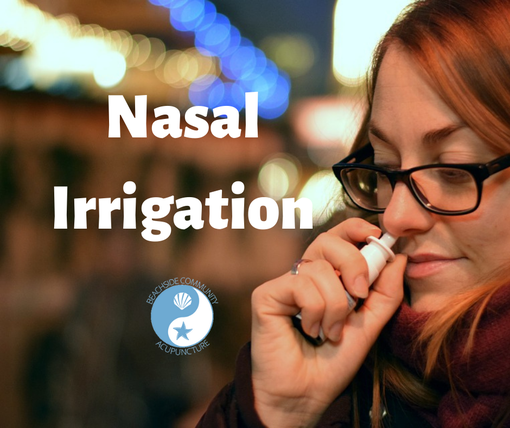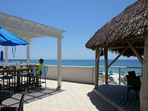
This post contains affiliate links, meaning Beachside Community Acupuncture PLLC may receive a small commission for purchases made through certain links at no additional cost to you. (In other words, you support us in a small way when you buy the products that we highly recommend and would use ourselves!) Click here to view our full disclosure policy.
The respiratory system can undergo a lot of stress in the winter months - cold and flu season means increased exposure to pathogens, the change in seasons comes with the rise and fall of allergens, and the use of heaters leads to more dryness - and while supplementation can combat some of these issues, the local therapy nasal irrigation can help the system at its start: the nose.
Nasal irrigation is an ancient practice from Ayurveda, and mentions in the media have made irrigation devices commercially available. Flushing out the nasal cavity can loosen stuck mucus, clear out any particles or molecules that may have gotten into the nose, and add moisture. It can be done seasonally or year-round depending on your needs, and is very easy to incorporate into a daily routine. All it takes is figuring out which method works best for you:
- Neti pot: The classic form of nasal irrigation is the neti pot, which looks like a small teapot. They're made from a variety of materials, but we prefer ceramic over plastic for its durability and lesser impact on the environment. To use a neti pot, stand over a sink and insert the spout into one nostril. Then, tilt your head to the side while slowly raising the pot to allow water to flow out the other nostril. (This sounds more uncomfortable than it is, but it does take some getting used to.)
- Nasal rinse: If you'd like a little more force than the easy stream provided by a neti pot, a nasal rinse involves inserting the top of a plastic squeeze bottle into one nostril and gently applying pressure to it. Saline solution will shoot into your nostril and out the other side.
- Nasal navage: An electronic device, a nasal navage injects solution into one nostril while sucking it out of the other. Some say that a navage makes nasal irrigation cleaner and more efficient, but it does cost more and can provide too much pressure for sensitive people.
- Nasal spray: While the above methods require mixing your own solution - see cautions below - you can also purchase saline sprays that won't irrigate as much as they'll simply moisten. You won't have a flow of liquid through your nostrils but rather will get a light mist through the nasal cavity, which may be all your nose needs.
Also keep in mind that other factors can influence nasal health! Limit synthetic fragrances, keep plants inside to raise ambient humidity, run a humidifier to add even more moisture to the air, etc. Nasal irrigation won't fix underlying imbalances that contribute to phlegm production or dryness, but it can provide local relief, taking at least some physical stress off the body's plate.

A Note on Safety
If you choose a method that requires you to make a saline solution, always be very careful with which "ingredients" you choose. Only use heavily filtered or distilled water to avoid complications from microbes found in tap water, and opt for salt that is specifically designed for nasal irrigation to be on the safe side. (We prefer buying salt in jars rather than individual packets to reduce waste, but you can check out both.)

Kathleen Ketola is a Licensed Acupuncturist and the owner of Beachside Community Acupuncture. She loves providing affordable acupuncture to the residents of McKinney, Texas, and surrounding cities like Prosper, Frisco, and Plano, but she also enjoys educating the general public on how acupuncture and Traditional Chinese Medicine (TCM) can treat everything from pain to infertility to stress and beyond. Click "Book Now" at the top of this page to book an appointment or feel free to contact her at (214) 417-2260.








